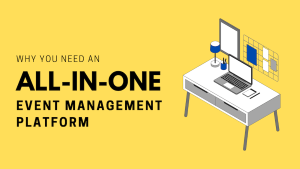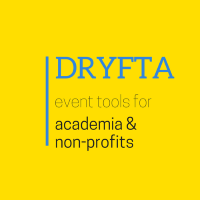If your organization often hosts events, you know that it can be hard getting your offering to break the surface and effectively resonate with your audience. However, new technology and online solutions make it easier than ever to automate many processes and maximize success even when the event is over.
Your event should reflect your organization’s main goal and aim to connect to potential guests in a personal way— and automation tools can help. Associations and other organizations should invest in solutions to automate communications and simplify internal processes. Otherwise, you’re wasting valuable time that could be spent on your actual event.
Fonteva, is committed to helping associations increase the value of their membership and translate value to their members through events. Even if you don’t work for an association, these best practices and tips can come in handy as you start thinking about your next event strategy.
Whether you’re just now implementing automation tools or want to improve your existing automation strategy, it’s important to consider the event management software and tools that your organization already uses. In this guide, we’ll cover how to best leverage automation for your event and do the following:
- Personalize marketing content
- Streamline the registration process
- Update guests on important event information
- Use data to make real-time insights
- Engage with guests after the event
When you utilize automation tools for your event, you spend less time creating and sending marketing content and more time engaging your guests and offering genuinely valuable experiences. Ready to learn more? Let’s begin.
1. Personalize marketing content
One of the most important elements in your event strategy is the marketing materials. After all, whether it’s within your email announcements, website pages, or social media posts, your marketing content is what entices your supporters to register for the event.
According to one study, personalized content delivers six times higher transaction rates than generalized content. That’s why many marketing emails are personalized with the recipient’s name, or why people often discover online ads that target their most recent Google search.
While your organization can manually personalize each message, automating the data from your constituent relationship management (CRM) system into your marketing content is more convenient and accurate. Ensure your management tools are native to, or at least can integrate with, your event CRM. This way, your data is automatically collected and managed in one place.
Using automation tools for marketing content helps establish stronger connections with event guests by leveraging personal data points like names and other relevant details.
For example, as you send out thank you emails or event reminders, your email content will automatically populate with the corresponding recipient’s name, the specific event, and financial preferences.
2. Streamline the registration process
After optimizing your event marketing content, you don’t want to lose a potential guest due to your registration forms. Whether the form is too lengthy or the questions are too complicated, many people find themselves simply abandoning the registration process altogether.
However, there are automation tactics that you can use that even make event sign ups a breeze. Consider the following ways you can use automation tools to streamline the registration process:
- Personalization. If this is someone who has signed up for your events previously or is a member of your organization, save some time during the registration process by automatically filling in the information that your database already has. For example, if they’ve submitted a registration form in the past with their name, email, and other basic signifiers, ensure your tools pull this data from your event CRM and autofill for the next event they register for.
- Quick and easy payment. Ensure you have an integrated payment solution that is a seamless part of your online registration. This way, registrants don’t have to go to a third-party site and risk feeling uncomfortable inputting their financial information. Further, with payment automation, organizations can make check, ACH, virtual card, and wire payments with ease. As soon as invoices are received and processed, payments are issued to your organization.
- Registration confirmations. As soon as someone completes your registration, your event software should automatically send out an email thanking the registrant and summarizing the event, as well as a payment invoice confirming a successful transaction. This way, registrants immediately know their payment and registration went through and there’s no room for questions.
Oftentimes, the registration process can seem long and tedious, and turn off even the most excited registrants. Optimize your event registration with the right automation tools to avoid registration form abandonment
3. Update guests on important event information
In the days and weeks leading up to the event, make sure to send out reminder emails and other content regarding the event. Keeping up consistent communication is important to ensure transparency and let guests know what they should expect. On top of that, there may be unforeseen circumstances that force you to change, cancel, or postpone an event. You need to make sure your communications tool can quickly update guests with the latest, most up-to-date information.
With your event management software, make sure you can:
- Set “triggers” to automatically send out emails when a certain action is performed. For example, triggered communications are great to send out confirmation emails and payment invoices, with the completed registration form acting as the trigger. This way, you can continue to use communications to engage attendees without requiring your staff to manually send messages.
- Schedule out emails in advance. This is perfect when reminding your guests of any guidelines or preparations that they have to do. With these reminders automated and scheduled in advance, you don’t have to stress out about sending the right message at the right time. Simply draft your message beforehand to ensure it expresses what you want and then choose the perfect time to send it.
- Quickly pivot to a virtual event. There are many reasons why pivoting to a virtual event may be necessary, whether you want to expand your offerings to those around the world or a global pandemic forces you to postpone all in-person traditional events. Make sure your software can automate the process of syncing your virtual event tools with existing event data and then send that relevant information to the registrants. This way, event guests automatically receive the appropriate virtual event alternative information without you having to manually transport this data into communications.
With marketing automation, it’s easy to maintain positive relationships with your event guests without your staff doing too much extra work. Instead of wasting time crafting and sending confirmation emails and reminders, spend more time focusing on customer questions and other engagements.
4. Use data to make insights in real-time
The more you plan events, the more you realize that it’s easy to burn out when ensuring that everything is going to plan. For instance, what if your marketing strategy isn’t garnering enough registrations? As you’re figuring out that specific issue, another problem is bound to show up.
Both before and during the event, your event management software and event CRM system is collecting and analyzing continuous pieces of data. According to Accudata, a data-driven strategy is the key to success. From registration information to email open rates, all of these metrics are being stored within your system.
One of the best parts of an integrated event software solution is that you can view your data in real-time. Within your event CRM system, better analyze your event processes with a comprehensive view of all processes and incoming data points. This way, you can easily determine the issues you have to target.
To gain a productive understanding of your event data in real-time, set up reports that automatically update as soon as more data comes in. As trends change, your event CRM’s reports will be updated as well. Better understand which efforts are most successful and which might need some more work. This way, you can easily pivot to a new tactic if needed.
5. Engage with guests after the event
Once your event comes to a close, this doesn’t mean you say goodbye to your event attendees forever. If anything, this is the perfect time to set up the foundation for future engagement. Who knows, maybe they’ll want to attend another event, or become more involved later.
Using your automation tools, send an email to your guests once the event concludes using the information they provided during registration. Make sure this email:
- Shows appreciation for your guests
- Summarizes how to get in contact with you
- Provides a survey or another forum for feedback
This email is the perfect way to build a relationship after the event while also giving you some insight into how your event was experienced by attendees.
Thanks to your CRM system, you have the data of all the guests who attended your most recent event, as well as data from attendees from all past events. This information is handy to jump start registrations for your next event. Determine which of the past guests might be most interested depending on survey answers or other metrics, and then send them an email announcing the upcoming event. To further incentivize them, you can even offer a discount code for previous registrants!
The next time you’re planning an event, consider if the above automation tips can help speed up and optimize the entire process, whether from your point of view or the registrants. With a dedicated event CRM system and reliable event management software, implementing automation for your next event should be a breeze. Good luck!







